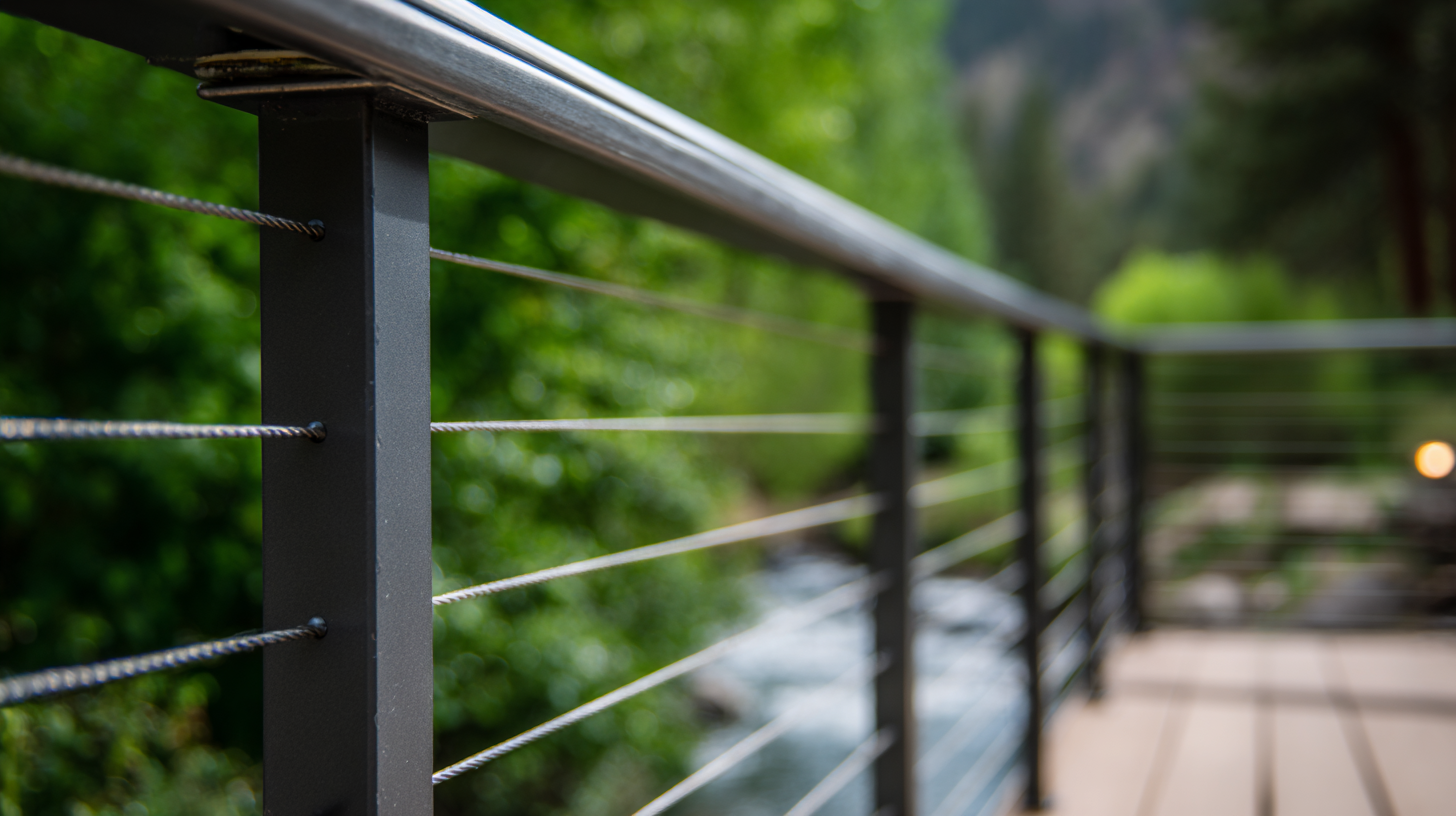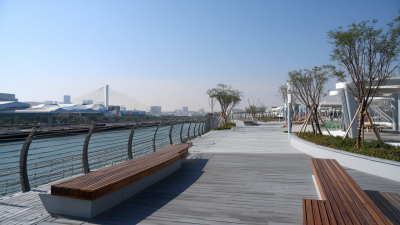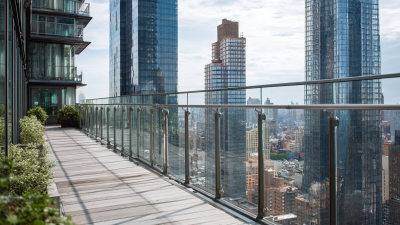Transforming Spaces: The Ultimate Guide to Cable Handrail System Designs and Installations
In today's architectural and design landscape, the cable handrail system stands out as a versatile and contemporary solution for both safety and aesthetics. This guide is dedicated to transforming spaces through innovative and functional cable handrail designs and installations. As the integration of modern materials and clean lines continues to shape design preferences, the cable handrail system emerges as a key player in various environments, from residential homes to commercial buildings. Understanding the nuances of this system—from construction and installation to maintenance—can empower homeowners, architects, and builders alike to create secure and stylish spaces. In this ultimate guide, we delve into the essential considerations and practical advice for selecting and implementing cable handrail systems, ensuring that every project not only meets safety standards but also elevates the overall design aesthetic.

Understanding the Basics of Cable Handrail Systems: Design Principles and Materials
Cable handrail systems have gained popularity due to their modern aesthetic and functional benefits. Understanding the basic design principles is crucial when considering their installation. A well-designed cable handrail system not only provides safety but also enhances the visual appeal of a space. Key elements include the spacing between cables, typically no more than four inches apart, to prevent falls, and the choice of materials that balance durability with style. Stainless steel, for example, offers corrosion resistance and a sleek finish, making it an ideal choice for both indoor and outdoor applications.
In addition to design principles, selecting the right materials is essential for ensuring the longevity of the cable handrail system. High-quality cables, posts, and fittings must be used to withstand weather conditions and regular wear and tear, especially in outdoor settings. The combination of galvanized steel cables and powder-coated aluminum posts can provide a robust structure that is both functional and attractive. Additionally, considerations such as local building codes and safety regulations should be incorporated into the design process, ensuring that the handrail system meets all necessary requirements while maintaining an elegant appearance.
Transforming Spaces: Cable Handrail System Material Preferences
Key Industry Standards and Codes for Cable Handrail Installations
When installing cable handrail systems, adhering to key industry standards and codes is critical to ensure safety and compliance. The International Building Code (IBC) and the American Society for Testing and Materials (ASTM) provide essential guidelines that define the structural integrity and load requirements for railings. These codes dictate the maximum allowable spacing between cables, which is crucial for preventing accidents and ensuring that the handrail can withstand sudden forces. For residential projects, local codes may have additional specifications, which should be consulted before installation.
Another important aspect is the accessibility standards set forth by the Americans with Disabilities Act (ADA). These regulations ensure that cable handrail systems are designed to accommodate individuals with disabilities, addressing aspects such as height, grip space, and overall stability. By following these standards, designers and installers can create functional and safe environments that enhance the aesthetic appeal of the space while prioritizing user safety. Compliance with these codes not only protects users but also fosters trust in your design and installation practices.
Transforming Spaces: The Ultimate Guide to Cable Handrail System Designs and Installations
| Design Aspect | Standard Code | Material Type | Load Capacity (lbs) | Installation Method |
|---|---|---|---|---|
| Cable Spacing | IBC & IRC | Stainless Steel | 200 | Mounting Brackets |
| Post Design | AAMA 2605 | Aluminum | 150 | Pre-Drilled Holes |
| End Post Stability | OSHA | Composite | 250 | Welded Joints |
| Cable Diameter | ASTM A313 | Wire Rope | 100 | Swageless Fittings |
| Height Requirement | ANSI A117.1 | Wood | 120 | Screw Fasteners |
Step-by-Step Installation Process: Tools and Techniques for Success
When it comes to installing a cable handrail system, a comprehensive step-by-step approach ensures both safety and aesthetic appeal. The installation process typically begins with gathering the right tools and materials, including cable, posts, and fittings, alongside essential tools such as a drill, level, and cable cutter. Industry data reflects that properly installed cable railings can reduce fall risk by over 50%, making safety a prime consideration in any installation project.
The next crucial step involves precise measuring and marking for post placement, ensuring compliance with local building codes, which often specify maximum height and tension requirements. According to recent industry reports, installations that utilize tensioning systems can enhance a railing's durability and longevity, preventing cable sagging and structural issues. Properly tensioned cables not only improve the handrail's strength but also maintain visual clarity, allowing unobstructed views, which is a significant factor for many homeowners and architects alike.
Finally, the installation culminates in securing the cables and making necessary adjustments. Many expert installers recommend regular maintenance checks every few months to ensure that the cables maintain their tension and the posts remain stable. By adhering to these installation processes and techniques, homeowners can achieve a beautiful and safe cable handrail system that enhances their living spaces while providing peace of mind.
Design Trends: Incorporating Aesthetic Elements in Cable Handrail Systems
With the growing emphasis on aesthetics in architectural design, cable handrail systems have emerged as a favored choice for modern spaces. According to a recent industry report by IBISWorld, the demand for stylish yet functional handrail solutions has seen an increase of 15% over the past three years. Homeowners and builders are increasingly drawn to cable handrails for their sleek appearance that complements both contemporary and traditional designs. The use of stainless steel cables paired with wooden or metal posts provides a versatile aesthetic that can enhance indoor staircases and outdoor decks alike.

Incorporating aesthetic elements into cable handrail designs is not just about visual appeal; it's also about creating seamless integration within a space. Recent design trends showcase the use of varied materials—such as tempered glass and aluminum—alongside cables to add unique flair. Reports from the American Institute of Architects indicate that minimalistic designs, characterized by clean lines and unobtrusive supports, are preferred by over 70% of architects surveyed. This trend encourages the use of innovative finishes and textures that elevate the overall design while maintaining safety and functionality, thereby transforming spaces into visually stunning environments.
Maintenance Tips: Ensuring Longevity and Safety in Cable Handrails
When it comes to cable handrail systems, maintenance is key to ensuring both longevity and safety. According to a report by the National Safety Council, nearly 25% of personal injuries occur due to falling hazards, making the proper upkeep of handrails critical. Regular maintenance not only enhances the aesthetic appeal but also significantly mitigates safety risks. Inspecting cables for fraying or corrosion, especially in high-moisture environments, is vital, as these factors can dramatically reduce a handrail's structural integrity.

Related Posts
-

Why Cable Handrails Are the Future of Modern Stair Design: Safety Meets Aesthetics
-

Exploring Cable Railing Innovations at the 138th Canton Fair 2025 in China
-

Revolutionizing Safety: The Impact of Cable Handrail Systems on Modern Architecture
-

The Ultimate Guide to Choosing the Right Cable Stair Railing for Your Home Decor
-

Exploring the Benefits and Design Options of Modern Cable Railing Systems for Homes
-

Understanding the Lifespan and Maintenance of Wire Rope for Optimal Performance and Safety